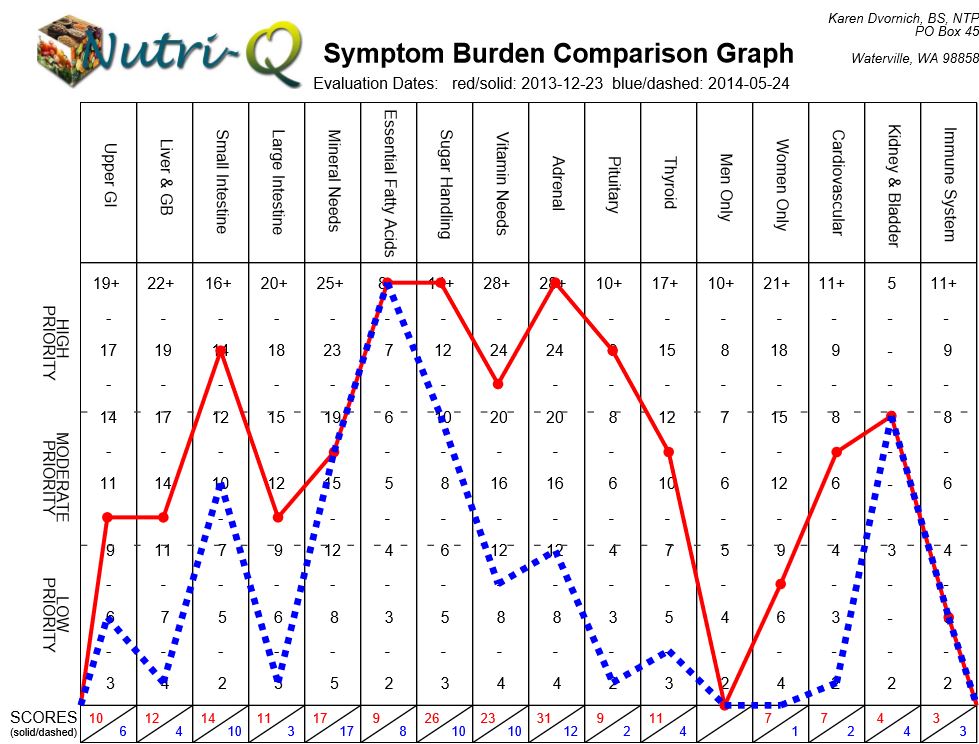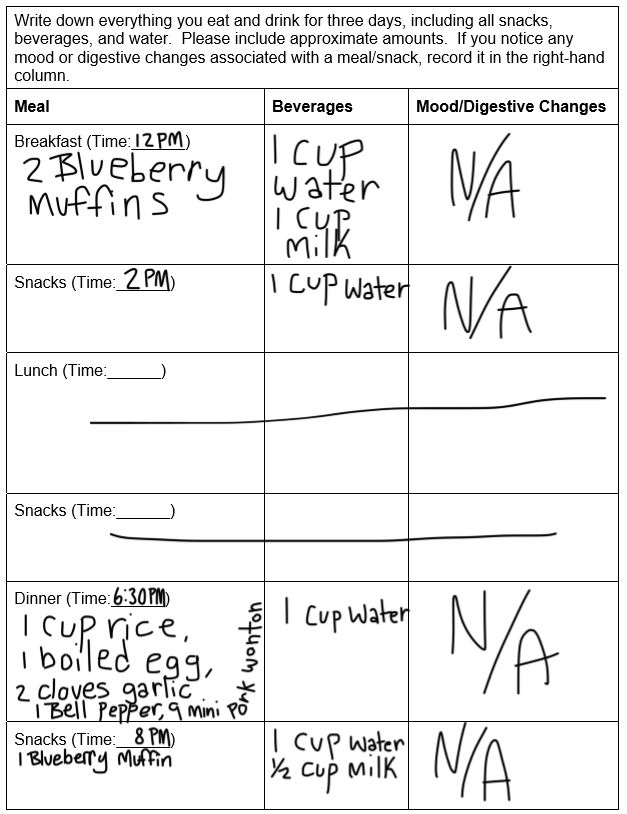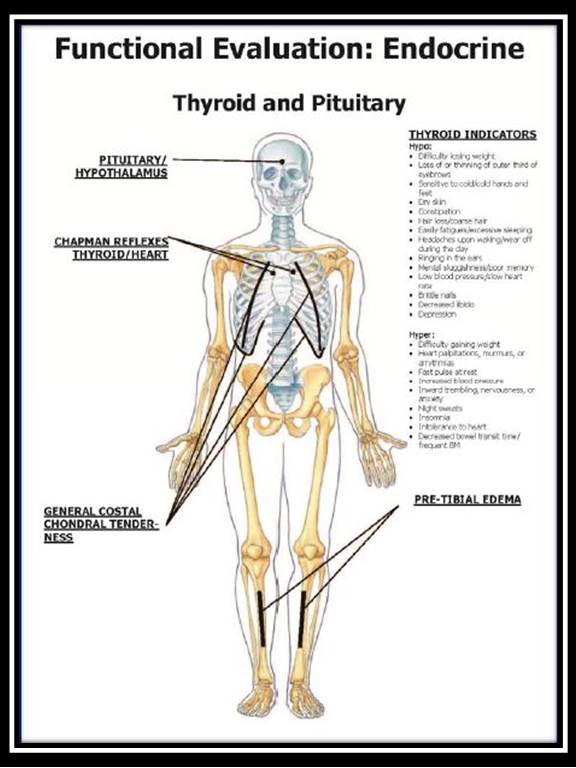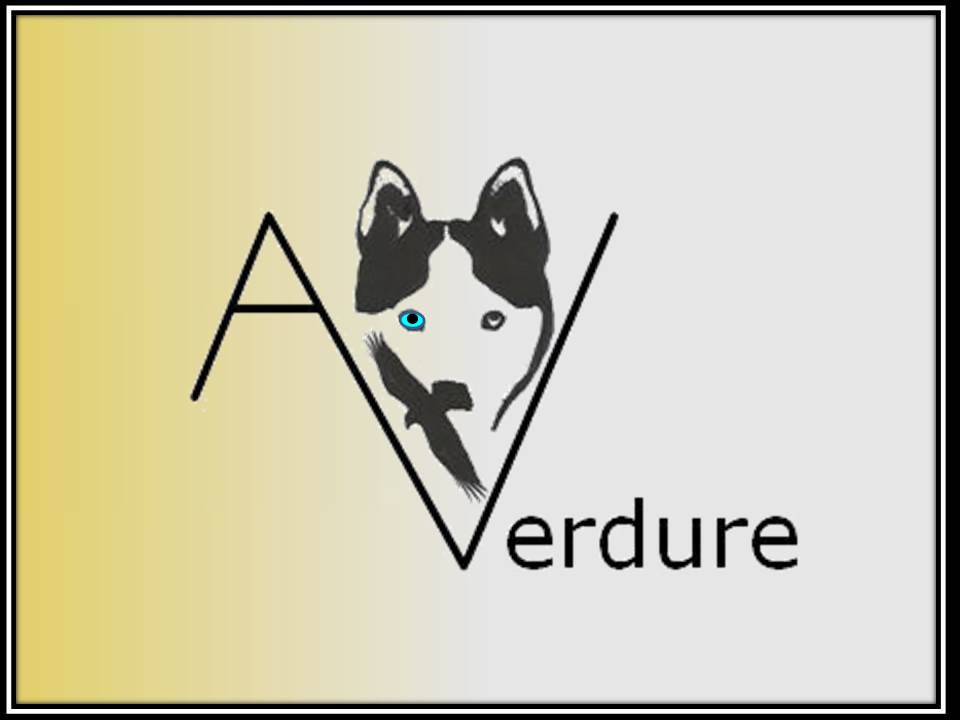Nutrition Evaluation Tools

Nutritional Assessment Questionnaire (NAQ)
Symptoms are hard to explain and the same symptom can be caused
by a number of different reasons. A questionnaire that helps pinpoint
systemic problems was designed by the Nutritional Therapy Association.
The NAQ has over 300 questions about lifestyle and symptoms.
The
graph is broken down into systems, such as Upper GI, Liver, Minerals
and Adrenals.
The graph is the baseline to assess changes over time.
This visual display helps clients see their progress and helps identify
where to focus.

Food Journal
Record what is eaten for 3 days in a row. Note: Most people procrastinate until
they eat "good" meals.
What is eaten is a small part of analyzing a daily diet.
The time of meals/snacks, what is drank, portion sizes, and mood after eating
provides a good look at a daily routine.
Muscle Testing
Muscles will weaken when their ability to respond to pressure (like lifting weights or trying to maintain
tone with rhythmic compression is offered.)
The length of time it takes a muscle to weaken is recorded.
Another form of muscle testing is how a muscle responds to an allergen.

Functional Examination and Lingual Neural Testing
There are points on the body that relate to different organs. When
pressure is applied on that point, for example, on the inside of
the knee, there can be a range of pain responses, from no pain to
quite a lot.
The level is recorded as a number given by the client.
Supplements that can reduce the inflammation at that point are given
to the clients to hold in their mouth for 30 seconds and spit it out.
If pain felt at that point lessens or completely disappears, that
supplement is recommended to take for a period of time.
Review of Medications/Supplements
It is important to know what medications and supplements a client is taking and for how long. Label
reading is important for supplements and a discussion of how to read labels ensues.
- Medications deplete nutrients in the body and a review of contraindications, possible reactions,
side-effects, drug-drug interactions, drug-food interactions is completed for each drug. An example
of a report is the use of aspirin.
- Although there are medications my clients must take for the rest of their lives, the goal is to improve
health thus reducing or eliminating the need for medications. It is important to educate my clients
and work with their physicians to monitor changes.
- For those clients with autoimmune diseases, cancer, or cancer survivors, I will support the health
side of any treatment by nourishing my clients while their doctors try to control tumors or reduce
symptoms of a disease.
|
|



